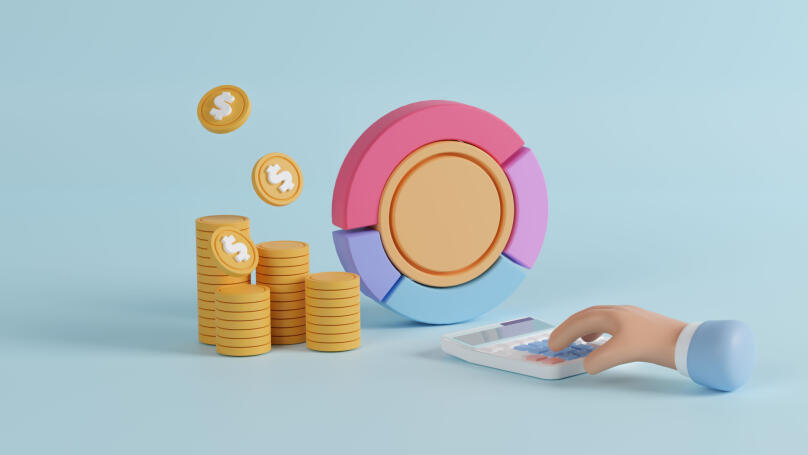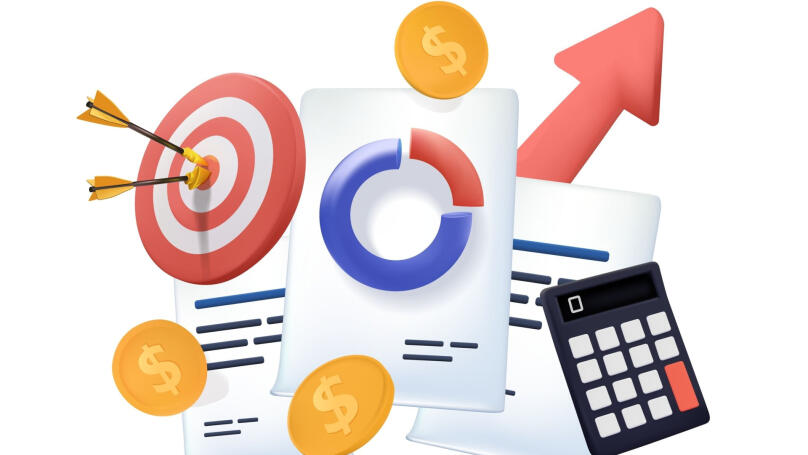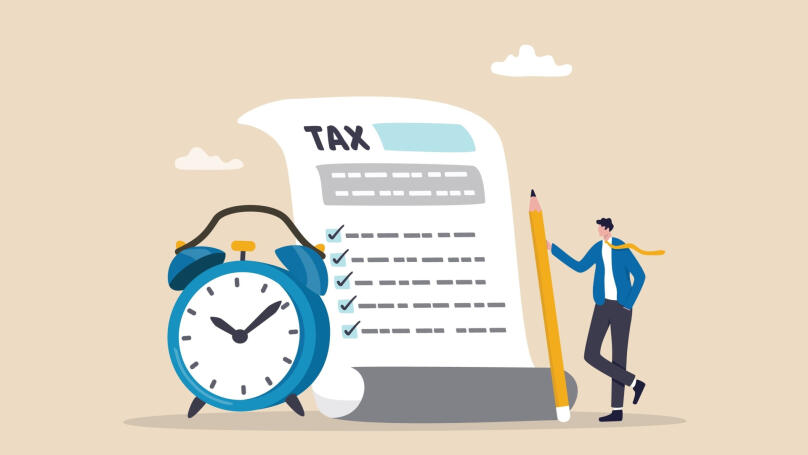Personal financial plan

What is financial planning, and how does it work?
Financial planning refers to properly managing your income and expenses. In addition to setting financial goals, this process involves devising strategies to accomplish them. Therefore, a financial plan is often considered a roadmap to attaining stability, prosperity, and confidence in the future.
Another way to define financial planning is as a method that enables you to manage costs effectively and increase a company's profits and an individual's income. Depending on this, financial planning can either be personal or intended solely for business.
Financial planning for a business is imperative to keep it ticking over. This plan enables management to complete all projects, accomplish planned tasks, allocate resources and finances between work areas, monitor progress, and promptly address issues. Without a financial plan, businesses take more risks, making them vulnerable to missing out on new opportunities, making mistakes, losing money, and even going bankrupt.
A personal or individual financial plan is drawn up and considers the income and expenses of a particular person. As a general rule, personal financial planning is a process that involves setting a specific goal to be achieved within a certain timeframe. Examples of goals might be buying a car or apartment, saving money for a vacation, education, etc. This sets apart an individual's plan from business planning, which requires ongoing monitoring of a company's financial resources to ensure efficient and profitable operations.
More about personal financial planning
Financial planning is vital for businesses, entrepreneurs, managers, and individuals to effectively distribute income, savings, and investments. It offers protection from various financial risks. This is why a separate document came about called a personal financial plan. It represents an individual strategy or a system of actions to achieve financial goals and includes the following information:
-
Your sources of income;
-
Your primary expenses;
-
Your so-called spare cash;
-
Your clearly defined goals and objectives;
-
A step-by-step plan to achieve them;
-
The potential risks and methods to stop them from occurring.
Creating a personal financial plan is considered a basic financial literacy skill. Meaning it is the ability to plan effectively, make the right financial decisions, and maintain financial stability.
Different types of personal financial planning

There are several types of financial planning depending on the goals you want to achieve, including buying a car, increasing your income, improving your financial circumstance, paying off your mortgage early, etc:
- Short-term planning
Usually, this kind of planning requires developing a plan that spans a few weeks or a month. A short-term plan will have a detailed list of income and expenses. It's important to consider all major expenses such as rent, utilities, food, transportation, and all sources of income, including your salary and passive income. It's crucial to specify the exact amount you spend on each necessity. This will give you a better understanding of your expenses and help you identify areas where you can reduce costs, save money, or eliminate something altogether.
- Medium-term planning
Analysing your finances over a month will not provide you with such a comprehensive and detailed picture as medium-term planning. This involves a document that is created for six months or a year. This plan includes monthly income and expenses but other income sources such as quarterly bonuses or annual remuneration, tax deductions, money gifted on holidays, etc. Expenditure may consist of fees for educational services, yearly income tax, seasonal expenses, repairs, etc. By following this approach, you can gain insights into allocating your annual funds, saving a portion of your income prudently, and investing wisely. Likewise, with the assistance of medium-term planning, you can draw up a budget several months in advance, explore possible sources of additional income and determine the goal you want to move towards.
- Long-term or strategic planning
This type of planning, designed several years in advance, is considered the most abstract. During this time, circumstances and living conditions may change significantly. The primary objective of creating a strategic plan is to establish a goal for the next 2-3 years and to identify the necessary steps to achieve it. Therefore, this planning is based, first of all, not on indicators of income and expenses but on prospects, possible risks, and ways to counterbalance them. In other words, considering your current financial situation, a long-term plan is approximate for the next few years of your life. This allows you to build a forecast for the future and determine, for example, when you can afford to buy a car, pay off your mortgage, go on vacation, etc.
Medium-term planning is often regarded as the most precise and challenging to create. This is because it requires working with both precise data, as in short-term planning, and more abstract and unpredictable prospects that are challenging to analyse. However, medium-term planning is more relevant for any situation. You can utilise this type of planning because it is versatile and can be used to save for a particular purchase or achieve more abstract goals, such as improving your financial situation or discovering additional income sources.
Why it is so important to have a personal financial plan: the benefits of planning
A personal financial plan will help you dispel illusions and discover practical ways to achieve your goals. Additionally, financial planning will help you to:
-
Gain control over your money and learn how to manage your financial resources. In other words, a financial plan will help you leverage your income and expenses, avoid unnecessary expenditures, accumulate funds, and invest wisely.
-
Set priorities and understand what you really need. A personal financial plan is also needed to understand your essential needs or requirements and what you can save for or completely abandon.
-
Provide financial security. Accumulating funds is a crucial part of planning that helps you achieve your main goal and provides a safety net against potential financial crises.
-
Discover new sources of income and start earning more. With the help of financial planning, you will know how to improve your financial situation and achieve prosperity.
-
Learn how to invest. By planning, you can make intelligent choices about how to invest your money to reach your financial goals in the future.
-
Discover methods to minimise risks and errors. Planning involves making well-informed choices about your finances, which can lead to a financially stable and more sustainable future.
Therefore, a financial plan is a well-planned approach to help you accomplish your objectives, enhance your financial status, and attain prosperity. Additionally, with personal financial planning, you will discover how to avoid accumulating debt and manage your funds wisely. Furthermore, a personal plan will teach you to take responsibility for your financial decisions and independently manage your life.
How to create a personal financial plan

Developing a financial plan is a challenging and time-consuming task. Likewise, these strategies need to be regularly updated and sometimes re-written. However, suppose you use this practice at least once and appreciate how it simplifies your life. In that case, you will find it difficult to abandon planning in the future. So, where do you start?
Step 1. Set your goals
First, to start planning, it is essential to relinquish vague aspirations and establish a specific goal that you aim to accomplish. For example, this could be paying off debts, paying off a mortgage, saving for a vacation, etc. Of course, you may have various goals. However, it would be best if you prioritised them. For example, your goals could include paying off your mortgage early, creating a financial cushion, or saving money for travel. In that case, you must pay off the loan first and then do everything else.
Also, the initial step is to categorise your objectives into short-term goals that can be accomplished soon, medium-term and long-term ones. The more precise your objectives are, the simpler it is to devise a plan to accomplish them. It's also crucial to establish a timeline for achieving specific outcomes.
Step 2. Evaluate your current financial situation
Next, you must assess your current financial situation, including your level and sources of income, major expenses, existing savings, and debts, and establish the possibility of investing. At this stage, analyse your income and expenses and calculate how much you can save monthly. This will help you comprehend your available resources and the steps you need to take to achieve your objectives.
Step 3. Determine the amount of funds you need to achieve your goals
To accomplish all of your goals that you previously defined, it is essential to determine the amount of money you will need. This could include the cost of real estate, the size of an investment portfolio, the cost of education, and other expenses.
Step 4. Identify sources of income
Next, identify sources of income that can be utilised to achieve your financial goals. In addition to your salary, the source of income could be passive income, interest on investments, rent from real estate, etc.
Step 5: Develop a strategy to achieve your goals
A strategy for achieving your goals is developed based on examining your current financial circumstances and your determination towards your financial goals. This strategy often includes reducing expenses, creating a reserve fund, and investing. In other words, you must establish the appropriate methods to achieve your objectives. Consider how much you can save by reducing certain expenses, the amount of money you can invest, and the income you can earn from it.
Step 6. Create a contingency plan
You need to understand what you can do in the event of an unexpected decline in your financial situation. After all, everyone can face risks, mistakes, and poor financial decisions. To minimise the impact of a personal financial crisis, it's important to have a safety net. Trust me, it can be a lifesaver in case of an emergency.
Step 7. Track and manage results
Depending on what kind of planning you were engaged in - short-term, medium-term, or your strategy, - you must compare your current state of affairs with the data predicted in your strategy found in the fifth step. Depending on those, your plan may need to be adjusted to stay on track to achieve your desired goal. The most efficient way to track results and update your personal financial plan is by using special applications designed for planning. Discover more about these below.
The best apps for personal financial planning
To help you prepare and update your financial plan, you should consider using apps for accounting and managing your personal finances. The most sought-after and widely popular among them are:
- Money Lover
This app is specially designed for those who want to manage their finances, avoid overspending, and learn how to save. With the help of Money Lover, you can create a budget and gather the necessary funds. The application will also help you keep track of your debt obligations and recurring payments and remind you to make the next payment.
- CoinKeeper
The application allows you to classify your income and expenses by category, as well as synchronise your account with your bank cards. CoinKeeper can generate financial management statistics for a specific period, automatically create a monthly budget, and track expenses.
- Wallet
This app lets you manage your finances, create shopping lists and payment templates, and analyse your key expenses. You can also export data to various formats.
- Buddy
Buddy is an app that helps you manage a joint budget. You can track expenses by category and share them with family members. The application also allows you to plan and distribute money over a certain period.
- Expense Manager
The application lets you view all your financial transactions and payments through charts, graphs, and other diagrams. Expense Manager also includes a section with calculators for currencies, deposits, and loans.
Suppose you are not a big fan of having additional applications on your smartphone and value simplicity and convenience. In that case, you can use Google Sheets for financial planning. Especially for this purpose, you will find a whole gallery of templates, for example, "monthly budget", "annual budget", "family budget", etc. An equally simple way of planning is to use Microsoft Word and Excel applications. The latter, for example, offers users a comprehensive set of tools for examining personal finances.
Common mistakes when creating a personal financial plan

Errors and inaccuracies when drawing up a financial plan make it difficult to achieve your objectives and sometimes can make implementing your plan impossible. Let's look at some of the most common financial planning mistakes and how to avoid them.
- Unrealistically short timeframes
To achieve your financial goals, it is vital to assess your current financial situation sensibly and, depending on your initial data, determine a realistic time frame for achieving your objectives. Otherwise, you might not be able to implement your plan, or you will be forced to use additional tools, evaluate your spending again, go into "austerity" mode, etc. For example, suppose you decide to buy a car that costs seventy thousand dollars. In that case, you must set a deadline to complete this goal within a specified period.
- The timeframes are not specific enough
An equally common mistake is setting a timeframe that is too far in the future, or not setting a deadline at all. This often happens if a large-scale goal is set, for example, buying a house. It is often more effective to break down the goal into specific stages to achieve your goal. In the first stage, consider setting a goal to save 10% of the house's cost. This can help keep you motivated throughout the entire plan.
- Lack of discipline
It is also one of the biggest obstacles to achieving your dreams. You must learn how to save a certain monthly amount and reduce expenses. Likewise, you may need to find an extra source of income, which can also be a challenge.
- Overlooking potential risks
When creating a financial plan, evaluating potential risks and developing strategies to mitigate them is crucial. Competent planning should consider possible life changes, such as losing a job or a change of employment, the birth of children, and fluctuations in the economic situation of your country.
- Inadequate financial analysis and insufficient control
Consider as much information and input as possible to ensure your financial plan meets your real-life needs. Regularly monitoring the plan's implementation and adjusting it according to your changing circumstances is also essential.
By avoiding common planning mistakes, you can create a personal financial plan that will be a versatile tool to help you attain financial stability.
Conclusion
Therefore, creating a personal financial plan can help you manage your cash flow, invest wisely, and gain confidence in your financial future. Planning can help you avoid financial issues, debts, and unnecessary expenses. So, you mustn't neglect your personal financial plan, as it can help you meet all your financial needs, improve your well-being, and provide stability.























